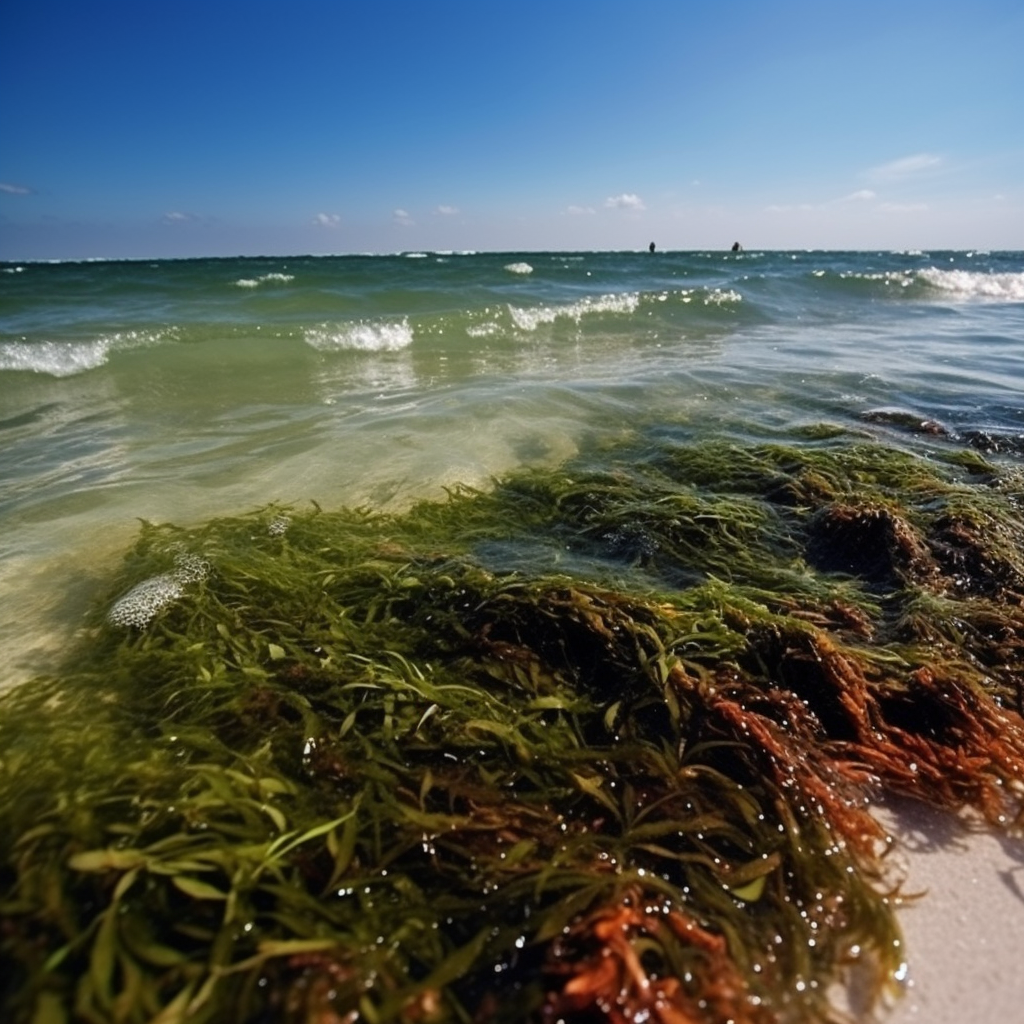The Gulf of Mexico Seaweed, a thriving and diverse ecosystem, is well-known for its pristine white sandy beaches, diverse marine life, and picturesque coastlines. However, beneath the surface lies a hidden gem that often goes unnoticed: native seaweed. As a crucial part of the marine ecosystem, native seaweed species play a vital role in maintaining biodiversity, supporting marine life, and providing valuable resources for the surrounding human communities. In this blog post, we will dive into the captivating world of Gulf of Mexico seaweed, exploring the different types, their ecological importance, and the economic opportunities they provide.
Gulf of Mexico Seaweed: An Overview
The Gulf of Mexico, situated between the southeastern United States, Mexico, and the Caribbean, covers an area of approximately 1.6 million square kilometers (615,000 square miles). Its warm waters are teeming with life, from vibrant coral reefs to vast schools of fish and from sea turtles to dolphins. The region’s diverse ecosystems, including seagrass beds, mangrove forests, and salt marshes, provide essential habitats for various species.
Gulf of Mexico Seaweed: A Diverse Native Array
Seaweed, or marine macroalgae, can be categorized into three main groups based on their pigmentation: green (Chlorophyta), brown (Phaeophyta), and red (Rhodophyta) algae. Each group boasts a variety of native species, each with unique characteristics and ecological roles. Some of the most common native seaweed species in the Gulf of Mexico include:
- Sargassum (Sargassum spp.): Brown seaweed that forms dense floating mats, providing important habitats for various marine species, including fish, sea turtles, and invertebrates.
- Sea lettuce (Ulva lactuca): A green seaweed with thin, translucent, and edible leaves, often found in shallow waters and rocky shorelines.
- Red mangrove (Rhizophora mangle): A unique species that, although not technically a seaweed, serves a similar ecological purpose. This salt-tolerant tree forms dense forests along the coastlines, providing essential habitats and protection for many marine species.
- Gracilaria (Gracilaria spp.): A red seaweed with a branching structure, often found in intertidal zones and shallow waters.
Sargassum on the cost
Ecological Importance of Native Seaweed
Native seaweed plays a crucial role in the Gulf of Mexico seaweed ecosystem, contributing to the overall health and stability of the marine environment. Some of the key ecological functions of seaweed include:
- Habitat Creation: Seaweed, particularly species like Sargassum, creates essential habitats for marine life, including fish, invertebrates, and sea turtles. These floating seaweed mats provide shelter and feeding grounds as a nursery for many juvenile species.
- Nutrient Cycling: Seaweed is a primary producer, converting sunlight, carbon dioxide, and nutrients into organic matter through photosynthesis. This organic matter provides a vital food source for many marine organisms.
- Water Quality Improvement: Seaweed can absorb excess nutrients, such as nitrogen and phosphorus, helping prevent harmful algal blooms and maintain water quality.
- Coastal Protection: Seaweed, particularly red mangroves, can help stabilize shorelines and reduce coastal erosion by trapping sediment and buffering wave energy.
Economic Opportunities

In addition to their ecological value, Gulf of Mexico seaweed species offer numerous economic opportunities for local communities. Some examples include:
- Aquaculture: Seaweed farming is a rapidly growing industry worldwide, with significant potential for expansion in the Gulf of Mexico region. Cultivating native seaweed species, such as Gracilaria, can provide a sustainable source of income for coastal communities while promoting environmental stewardship.
- Food and Nutraceuticals: Seaweed is a highly nutritious and versatile food source, rich in vitamins, minerals, and antioxidants. Edible native species, like sea lettuce, can be incorporated into various dishes or processed into dietary supplements and functional foods, contributing to the growth of the seaweed-based food industry.
- Biotechnology and Pharmaceuticals: Seaweed-derived compounds, such as carrageenan, agar, and alginate, have valuable properties that can be harnessed for various industrial and medical applications. Gulf of Mexico seaweed species offer a rich source of bioactive compounds, which can be utilized in developing new pharmaceuticals and other biotechnological innovations.
- Bioenergy: Seaweed biomass can be converted into biofuels, such as ethanol and biogas, providing a sustainable alternative to fossil fuels. The cultivation of native seaweed species for bioenergy production can not only reduce the region’s dependence on nonrenewable resources but also create new job opportunities in the renewable energy sector.
- Ecotourism: The unique and diverse marine ecosystems of the Gulf of Mexico, including native seaweed habitats, offer great potential for ecotourism initiatives. Local communities can benefit from increased revenue by promoting responsible and sustainable tourism practices while raising awareness about preserving and protecting their natural resources.
Conservation and Sustainable Management
Given the ecological and economic importance of the Gulf of Mexico seaweed, it is essential to adopt conservation and sustainable management strategies to ensure the long-term health of these vital ecosystems. Some of the critical conservation measures include:
- Monitoring and Research: Regular monitoring of native seaweed populations and research into their ecological functions and potential threats can inform effective management strategies and support the sustainable use of these resources.
- Habitat Restoration and Preservation: Protecting and restoring essential seaweed habitats, such as seagrass beds and mangrove forests, can help maintain the overall health of the marine ecosystem and support native seaweed populations.
- Sustainable Harvesting Practices: Implementing sustainable harvesting practices, such as quotas and seasonal restrictions, can help prevent the overexploitation of native seaweed species and promote long-term resource availability.
- Education and Outreach: Raising public awareness about the importance of Gulf of Mexico seaweed and the need for conservation measures can foster a sense of environmental stewardship and encourage responsible resource management.
Native seaweed in the Gulf of Mexico represents a hidden treasure of ecological and economic significance. By exploring and appreciating the diverse array of native seaweed species, understanding their vital role in maintaining the health of the marine ecosystem, and recognizing the myriad of economic opportunities they provide, we can work towards a sustainable future for the Gulf of Mexico and its unique marine habitats. Through conservation and sustainable management efforts, we can ensure that the remarkable world of native seaweed continues to flourish for generations.

